Ljubljana is the capital city of Slovenia
and
most of the city center is car-free.
You will find an array of museums, clothing stores, cafes, and markets.
and
most of the city center is car-free.
You will find an array of museums, clothing stores, cafes, and markets.
Without the buzzing of cars,
there seems to be a more relaxing atmosphere
of people going about their daily lives.
Have I told you lately just how much I love food in Slovenia?
It's like a clashing of cultures, cuisine, and a little bit of hipster thrown into the mix.
Once again, I thankfully tossed aside my Italian-food-only diet and dove into a world of steak burgers, fruit smoothies, and green algae cookies. They don't have this stuff in Italy!
It's like a clashing of cultures, cuisine, and a little bit of hipster thrown into the mix.
Once again, I thankfully tossed aside my Italian-food-only diet and dove into a world of steak burgers, fruit smoothies, and green algae cookies. They don't have this stuff in Italy!
| On the weekends, the central market is at its busiest selling produce, flowers, souvenirs, clothing, and jewelry. The farmer's market in Ljubljana was actually the largest one I have seen in Europe so far. | We were even conned into trying Prekmurska gibanica, a traditional Slovenian dessert, stuffed with poppy seeds, cottage cheese, walnuts, and apples (pictured below). |
| While I began to wonder how anyone stayed in business or who would buy this much fresh produce, I saw utility vans pull up and load large crates of fresh fruits and vegetables. Local grocery stores and restaurants rely heavily on these farmers for fresh produce. Coming from a country of imports and chain restaurants, it still puts me in awe to see things grown and sold locally on such a high scale. |
Speaking of symbols,
another famous mark of Ljubljana is the dragon.
Its presence can be seen throughout the city
on the coat of arms, buildings, and bridges.
Another symbol of Ljubljana is the historic Ljubljanski grad (castle),
which overlooks the city center.
It can be reached on foot or by funicular.
| Currently it houses small exhibits and events throughout the year, but most of the castle is open freely to the public (minus paid exhibits). The area was first used by early settlers during the Bronze and Iron Age. After that ownership continuously switched hands between the Romans, Huns, Hungarians, Austrians, and French. During WWII it held Italian POW's. |
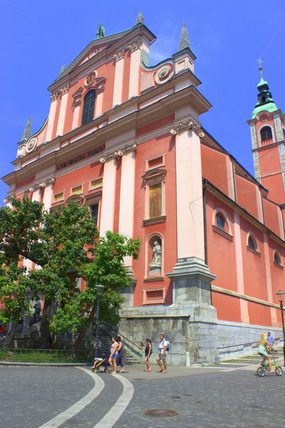

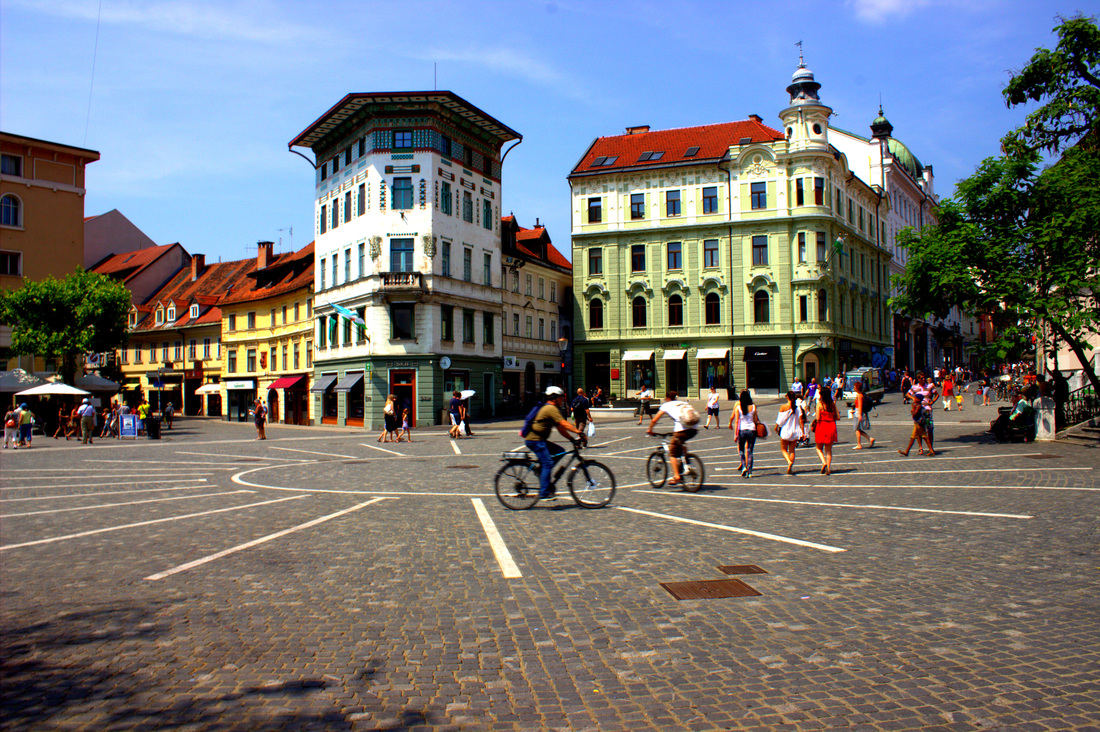


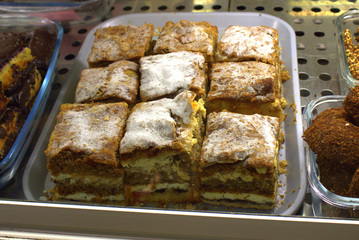
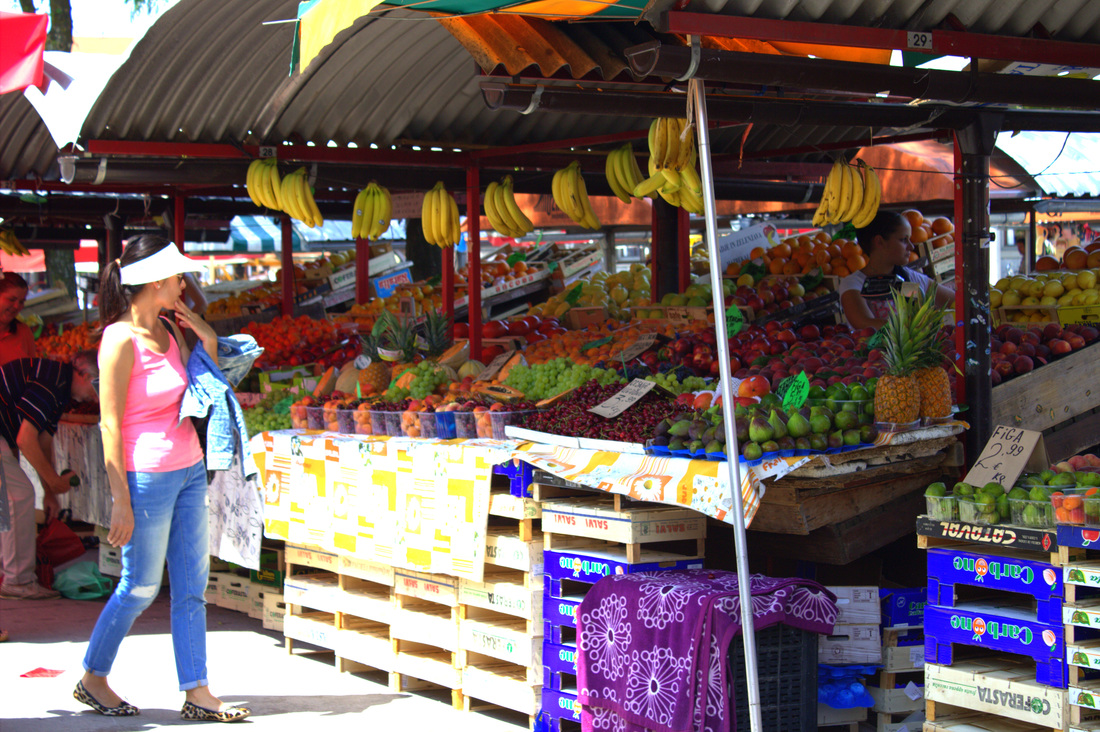
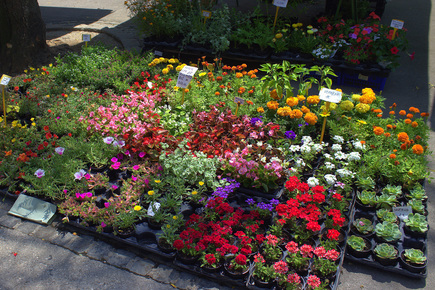

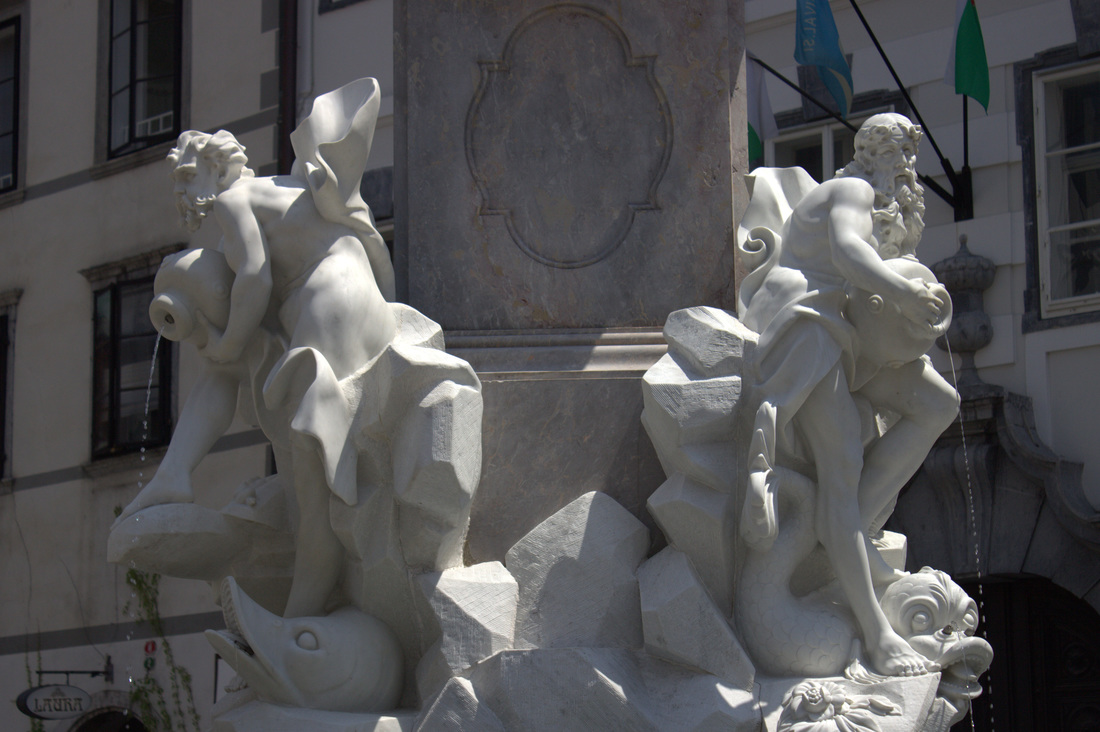
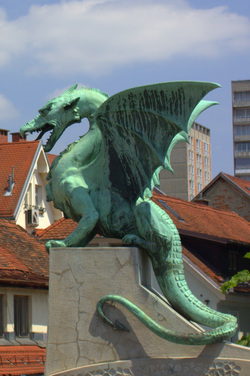
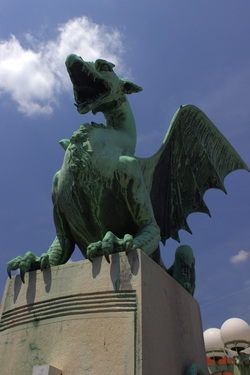

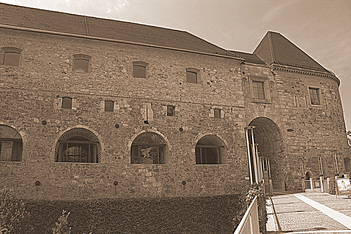
 RSS Feed
RSS Feed
